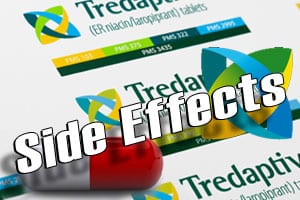
A new study found that Tredaptive, a cholesterol drug manufactured by Merck & Co., increased serious side effects while not offering advertised benefits. The study—called HPS2-THRIVE—looked at 25,673 patients and was led by Jane Armitage, a professor of clinical trials and epidemiology at the University of Oxford, said Bloomberg News. Study results were presented today […]
 A new study found that Tredaptive, a cholesterol drug manufactured by Merck & Co., increased serious side effects while not offering advertised benefits.
A new study found that Tredaptive, a cholesterol drug manufactured by Merck & Co., increased serious side effects while not offering advertised benefits.
The study—called HPS2-THRIVE—looked at 25,673 patients and was led by Jane Armitage, a professor of clinical trials and epidemiology at the University of Oxford, said Bloomberg News. Study results were presented today at the American College of Cardiology’s meeting in San Francisco, California. Tredaptive was pulled from the market this year, Bloomberg News noted.
Not only was Tredaptive found to increase bleeding and infections, the drug did not reduce stroke risks or the need for surgical procedures and did not reduce the risk of death or heart attack in people diagnosed with vascular diseases, said Bloomberg News.
Tredaptive contains the vitamin niacin and laropiprant. Niacin, explained Bloomberg News, appears to raise good—HDL—cholesterol levels, according to research; laropiprant, an experimental medication, reduces one of niacin’s more uncomfortable effects, face flushing. The study’s results, said Armitage, might change how niacin is used in the future.
“Niacin has been used for many years in the belief that it would help patients and prevent heart attack and stroke, but we know now that its adverse side effects outweigh the benefits when used with current treatments,” Armitage said in a statement, Bloomberg News wrote.
Last December, Merck announced it would not be seeking U.S. Food & Drug Administration approval for Tredaptive, ceasing its global sales in January. Tredaptive is approved in 70 countries, and sold in 40, Bloomberg News pointed out.
The trial also found that Tredaptive failed to minimize the risk of the vascular events it is believed to prevent, said Bloomberg News. That announcement was made in December. Last week, a European medical journal wrote that Tredaptive caused significant muscle weakness, an adverse event that was found to be more pronounced in Asian patients, said Reuters.
An unexpected adverse event seen in patients taking Tredaptive, said Reuters, was the significantly increased bleeding rate: 2.5 percent in Tredaptive users, versus 1.9 percent in nonusers. Infection rates were also worrisome, said Reuters: 8.0 percent versus 6.6 percent. Other very high adverse events were seen in patients taking Tredaptive, which are known to be associated with niacin, such as new onset diabetes (9.1 percent versus 7.3 percent), diabetic complications (11.1 percent versus 7.5 percent), and gastrointestinal issues (4.8 percent versus 3.8 percent), said Reuters.
Speaking about Tredaptive at the American College of Cardiology meeting, Professor Armitage said, “We now know that its adverse side effects outweigh the benefits when used with current treatments,” wrote Reuters.


